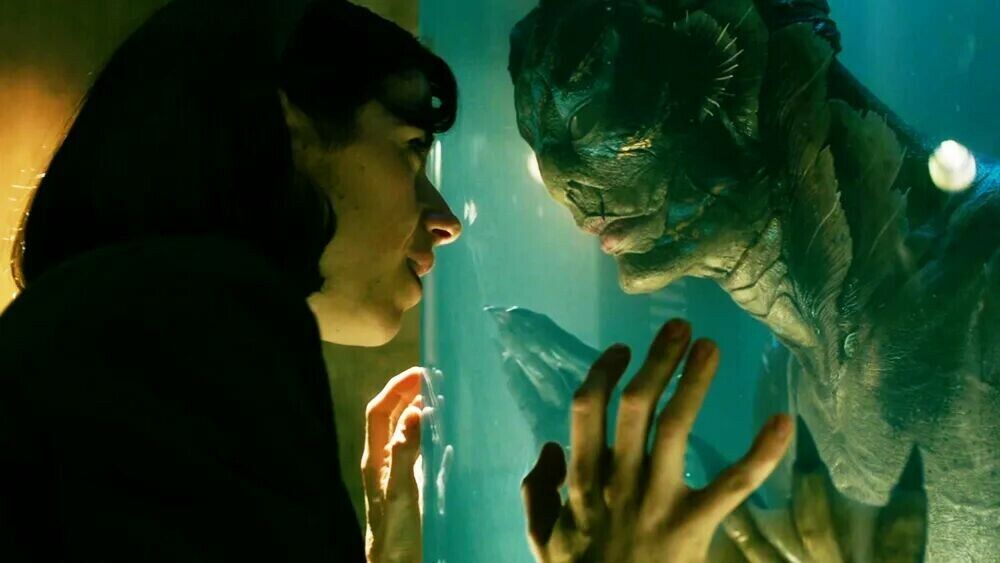
The Shape of Water and Lighting!
During the filming of "Crimson Peak," Guillermo del Toro handed cinematographer Dan Laustsen the screenplay for "The Shape of Water." Laustsen initially wondered how they would shoot the unique story of a mute woman falling in love with a humanoid-amphibian creature in a high-security government lab in 1962 Baltimore.
In the beginning, Del Toro's idea of shooting in black and white was abandoned due to financing concerns. The focus then shifted to color, with greens and blues representing water, red symbolizing life, love, and death, and a meticulous attention to shadows and contrast.
Working closely with the production designer and costume designer during eight weeks of pre-production, Laustsen harmonized colors across lighting, costumes, and set designs. For instance, Sally Hawkins' character's apartment featured blue-green and steel blue, while warm and golden lighting set the tone for her neighbor Giles' apartment.
Using gels, LED lights, and a diffuser filter on the Arri Alexa XT camera, Laustsen aimed to recreate the aesthetic of a 1950s movie, ensuring the stars looked amazing, Hawkins resembled a princess, and the antagonists appeared rugged and tough throughout the 58-day shoot at Cinespace Studios in Toronto in 2016. Below are some thoughts on lighting.
Balance and Harmony:Achieving a balance between light and shadow is crucial for creating a visually appealing scene. Well-balanced lighting ensures that all elements in the frame are illuminated appropriately, enhancing the overall harmony of the composition.
Contrast and Mood:
Strategic use of contrast in lighting contributes to the mood and atmosphere of a scene. High contrast between light and shadow can evoke drama or tension, while low contrast may convey a softer, more subtle mood. Understanding how to manipulate contrast enhances storytelling through visuals.
Color Temperature:
Consistent color temperature across all light sources is essential for maintaining a cohesive look. Understanding the color temperature of various lights (e.g., daylight, tungsten) and using appropriate gels or adjustments helps avoid color imbalances that can distract or distort the visual narrative.
Directionality and Angle:
The direction and angle of light influence the way objects and characters are perceived on screen. Consider the motivation for light sources within the narrative and use them to sculpt the scene. Frontal lighting is more neutral, while side or backlighting can add depth and dimension to the visuals.
Emphasis and Focal Points:
Use lighting to guide the audience's attention to key elements in the frame. By highlighting specific areas or characters, you can emphasize important details and contribute to the overall storytelling. Techniques such as spotlighting or selective lighting help create focal points within the composition.
These principles, when applied thoughtfully, contribute to the creation of visually compelling and narratively effective scenes in filmmaking.



2 people like this
I love this film and its visual approach. Thanks for sharing Mario Leone
2 people like this
The look of this film was sooooo fun and unique!
1 person likes this
Thanks for sharing, Mario Leone! I like watching movies/shows and figuring out the color symbolization in them. I add color symbolization in my scripts sometimes, but I'll like to do it more.
2 people like this
Thanks for the share, Mario Leone! Never got a chance to see this film but now I really feel like I need to
2 people like this
Thank you for sharing Mario Leone !
2 people like this
Thanks Mario Leone
2 people like this
It looks very effective! I haven't seen this film but I've seen Crimson Peak :)
2 people like this
Out of curiosity, Maurice Vaughan, do you write and direct your own films? Only asking since I'm not always certain producers, directors, DP's, Art directors enjoy reading that kind of stuff in scripts, unless it is REALLY important to put it in. I always learned that you need that part (mainly) to the director, DP, etc. But I can see it working very well when you write and direct your own film, either on a low budget or a big one.
1 person likes this
Hi, Jaap Ruurd Feitsma. I only write scripts. I don't have any interest in directing. I only add color symbolization and other symbolization in my scripts if they're important to the story.
"I always learned that you need that part (mainly) to the director, DP, etc." A director, DP, etc. can add symbolization later on, but I think it's the writer's job to include symbolization. Symbolization helps a writer give the story a deeper meaning.
1 person likes this
Yeah that makes sense, Maurice Vaughan! Thanks. Codes and conventions, in particular semiotics might be very useful, too in that regard :)
You're welcome, Jaap Ruurd Feitsma.